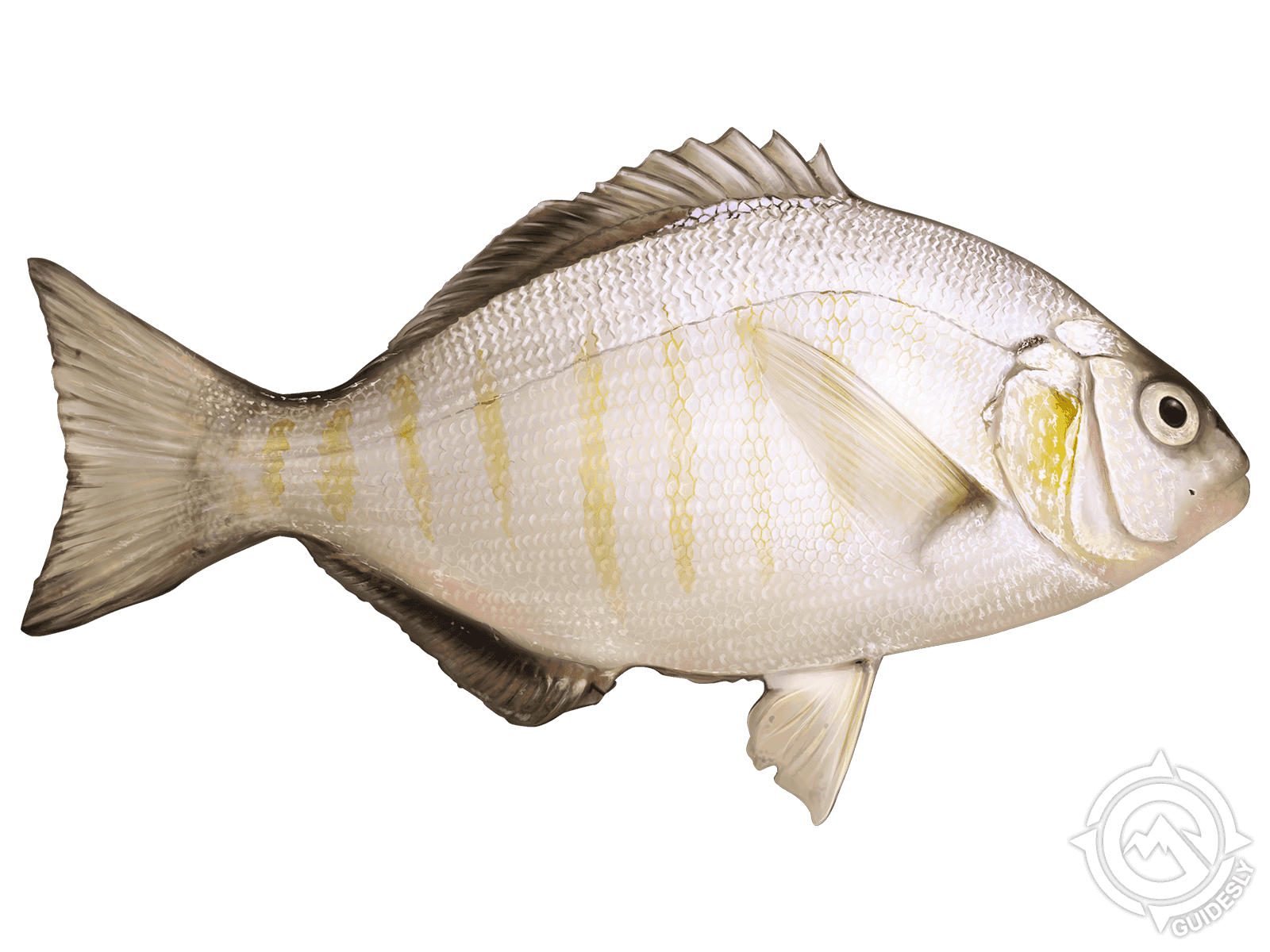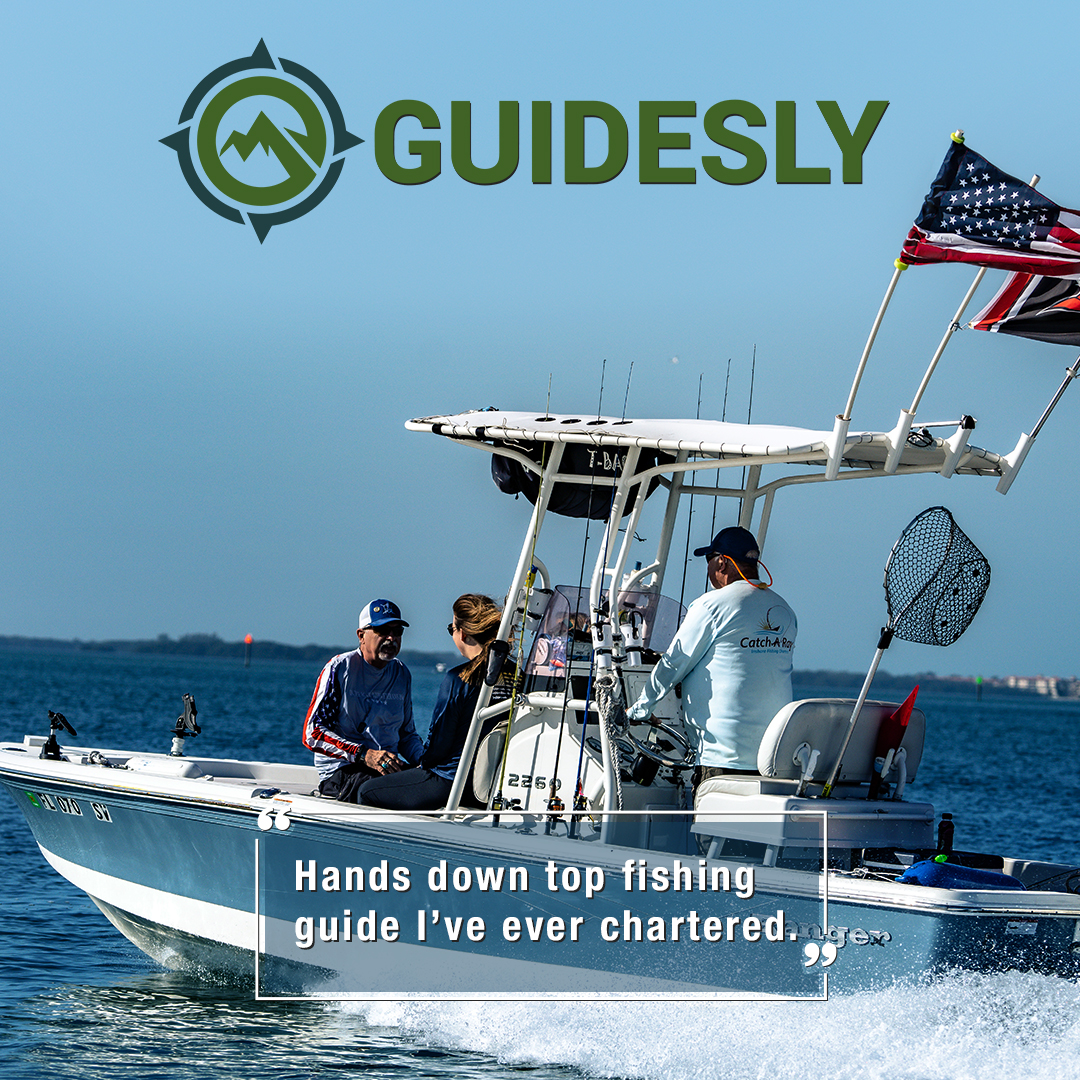Barred Surfperch

Species Details
Amphistichus Argenteus
Embiotocidae
Perciformes
Onshore, Nearshore
1 - 1 lbs.
4" - 17"
Barred Surfperch (Amphistichus argenteus) Fish Description
Barred Surfperch, also known as silver perch, barreds, sand perch, surfperch, and silver surf fish, is one of the three large surfperch species.
They are most distinguishable from the other surfperches by the presence of bronze or brassy bars and spots on their sides and by the absence of a red tail. Barred surfperch are predominantly brassy or silver in color, with olive-green to yellow-green hues on their back, and silver on their undersides.
Though most Barred surfperches have brass or gold bars on their sides with spots in-between, some Barred surfperches are seen without those bars on their sides. They have a slightly jutting upper jaw beyond their lower jaw, with the low edge of their eyes above the mouth.
The dorsal spine of the Barred surfperch is shorter in comparison to the longest dorsal soft-rays.
Diet and Size
Barred surfperches mainly consume sand crabs.
They can grow up to 17 in. in length, but averagely do not exceed 12 in. The maximum recorded weight of the Barred surfperch is 4.4 lbs.
Interesting Facts about Barred Surfperch
- The scientific name of the Barred surfperch, Amphistichus argenteus, comes from the Greek word “Amphistichus,” meaning a double series, with regard to the two rows of teeth within each jaw. And “argenteus,” a Latin word meaning silvery.
- The Barred surfperch is considered to be one of the main fish for sandy shore anglers from southern and central California anglers
Barred Surfperch - Fishing Techniques
For baiting the Barred surfperch, anglers can use sand crabs, sandworms, blood worms, shrimp, squid, cut fish, clams, mussels, and other small hard baits. But live sand crabs would be your best bet, as sand crabs consist of 90% of the Barred surfperch diet.
You can catch the Barred surfperch with just about any bait imaginable, as many others have caught this fish with nothing except plastic grubs. Choosing between light to medium tackles mainly depends on the conditions. The best waters for fishing these fish would be just outside the first set of breakers for you to find them.
Several anglers commonly use a pyramid sinker, the size would be contingent on what would hold the bait in place. As for the line, an 8 to 20-pound test can work well. A high/low leader is frequently used for size 6 to 2 hooks.
Barred surfperch can be found and caught year-round, but the prime months to catch them would be around December-January in southern California.
Habitat and Distribution
Barred surfperch are native to the inshore waters from northern California, US to southern Baja California, Mexico. And common to most sandy-shore, oceanfront piers, north of Pacifica Pier.
They are predominantly found in the surf of sand beaches, shallow waters, where markings blend with the wave churned waters, but also observed in trawl catches at depths up to 240 ft. Barred surfperch can also be seen near rocks, pilings, and other waters with good sources of cover and food.







